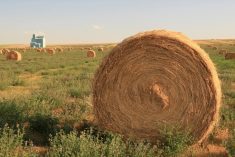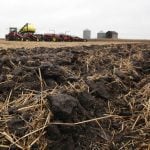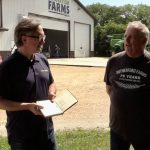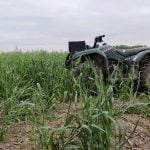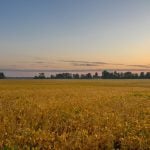When it comes to assessing and preventing winterkill in alfalfa stands, timing is everything.
In a recent Beef Cattle Research Council webinar on winterkill in forage stands, Christine O’Reilly encouraged producers to scout alfalfa fields early and often to get on top of any issues resulting from winterkill. O’Reilly is a forage and grazing specialist with the Ontario Ministry of Agriculture, Food and Rural Affairs.
To maximize yield potential, O’Reilly shared what to look for if you suspect a winterkill issue in your alfalfa fields, as well as how to reduce some of the risk factors for winterkill.
Read Also

Why post-drought pasture management matters for beef farmers
Pasture management is always important, but it is especially important following a drought. During these challenging periods, pastures may suffer…
Count plants and assess root health
In early spring, start your assessment by doing a healthy plant count.
“Because alfalfa plants get bigger as they age, the stand will thin out, so the number of healthy plants that you need depends on how old that stand is,” says O’Reilly.
A new seeding should have 20 or more healthy plants per square foot. In the first production year, 12 to 20 healthy plants per square foot is recommended, and in the second production year, eight to 12 healthy plants.
“If you’re growing an alfalfa-grass mixture, you can usually go to the lower end of that range because the grasses will make up for the yield.”
For the third production year or older, the ideal number is five healthy plants per square foot.
At the same time, assess the health of the root systems on your alfalfa plants. Dig up some roots, cut open the taproot and examine its colour inside.
“A healthy root should be like the creamy off-white colour of most potatoes,” she says. If the root is yellow or brown inside, it’s due to rot, and a stringy texture indicates an unhealthy root.
O’Reilly refers to this assessment as an early warning system.
“You’ve got a chance if you notice a problem to get on the phone with your seed dealer and figure out how you’re going to deal with it,” she says. “Depending on the severity, you may decide to patch that field, so put a grass or put some red clover in it just to get it through this year. If it’s very severe you might decide to terminate that stand and rotate it into something else.”
Later in spring, once there is about 15 centimetres of growth, O’Reilly recommends doing a stem count to predict yield potential. Fifty-five stems or more per square foot suggests 100 per cent yield potential. For a range of 40 to 50 stems per square foot, the yield potential is between 75 to 92 per cent, and the stand may need to be reseeded in the future. For fewer than 40 stems, it’s usually best not to keep the stand from an economic perspective.
“Harvest is essentially a fixed cost. If you have a very low-yielding hay field, your cost per tonne is much higher than if you have a high-yielding hay field,”says O’Reilly.“Generally if an alfalfa stand has less than 40 stems per square foot, we say it’s not worth holding on to.”
Reduce stress to help alfalfa overwinter
While the main risk factors for winterkill, such as temperature and snow cover, are out of our control, O’Reilly suggests focus- ing on reducing stress on alfalfa plants to help them winter better. Start by choosing a disease-resistant variety.
If you know you’ve got a particular disease problem in your field, ask your seed supplier about varieties that are resistant or highly resistant to that specific disease, says O’Reilly. In general, make sure the variety is moderately resistant across the board to relieve stress for that crop, she adds.
Another aspect to consider is fall dormancy rating, which indicates how early it begins to grow in spring and how late it grows into fall.
“Anything above a five has really poor winter survival. So in Ontario, we generally say a four is appropriate unless we’ve got consistent problems with winterkill,” she says. “For example, the Ottawa Valley has a special talent for killing alfalfa, so in that region they might want to go with a fall dormancy of three.”
Fertility is another factor within our control. Stay up-to-date on soil tests, and know what nutrients your alfalfa stand requires. Alfalfa has a particularly high nutrient demand compared to many other crops grown in Canada.
“We can’t always assume that our manure is giving the crop a balanced nutrient profile,” O’Reilly says. “Making sure that we’ve got that soil test so we can top up anywhere is helpful in making sure that those stands persist.”
Finally, respect the fall rest period your fields require.
“Because the crop needs time to recover and harden off between harvest and that killing frost, by not taking a cut during that window we can allow the crop to recover and put energy in its taproot so it can regrow quickly in the spring,” she says.
Contact your provincial extension specialist for information on ideal rest period start dates in your area.









